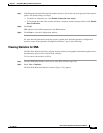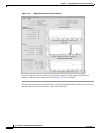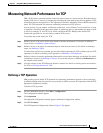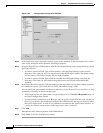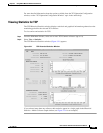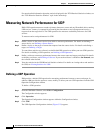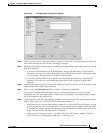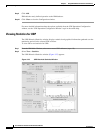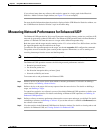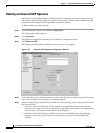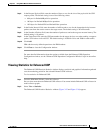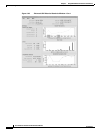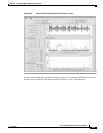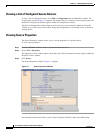
3-39
User Guide for Internetwork Performance Monitor
OL-11291-01
Chapter 3 Using IPM to Measure Network Performance
Measuring Network Performance for Enhanced UDP
If you selected more than one collector, their statistics appear in a single graph in the Historical
Statistics—Multi-Collector Graph window (see Figure 2-14 for an example).
For more detailed information about the statistics displayed in the UDP Historical Statistics window, see
the “UDP Historical Statistics Window” topic in the online help.
Measuring Network Performance for Enhanced UDP
The Enhanced UDP operation for Voice over IP measures round-trip latency, packet loss, and jitter in IP
networks by generating synthetic UDP traffic. The Enhanced UDP operation sends a defined number of
packets of a defined size from the source to a target with a defined interpacket delay.
Both the source and the target must be running version 12.1 or later of the Cisco IOS software, and the
SA Agent Responder must be enabled on the target.
To enable the SA Agent Responder on the target, use the rtr responder IOS configuration command.
The packets sent out to measure jitter contain packet sequence information, as well as sending and
receiving timestamps from the source and the Responder.
Note The Enhanced UDP operation sends only UDP data traffic, and does not send any voice packets.
The Enhanced UDP operation measures the following network performance statistics:
• Round-trip network latency
• Per-direction packet loss
• Per-direction interpacket delay variance (jitter)
• Network availability and errors
To measure end-to-end performance for Enhanced UDP:
Step 1 Define a device as the source device from which to measure performance. For details on defining a
source device, see Defining a Source Device.
Step 2 Define a device as the target of discovery requests from the source device. For details on defining a
target, see Defining a Target.
To control how statistics are collected, use one of the default Enhanced UDP operations or define your
own Enhanced UDP operation. For details on defining an Enhanced UDP operation, see Defining an
Enhanced UDP Operation.
Step 3 Define a collector to measure performance between the source router and target you defined. For details
on defining a collector, see Defining a Collector. If you set the collector’s schedule to On Demand, start
the collector when needed.
Step 4 View the statistics in the Enhanced UDP Historical Statistics window. For details on viewing end-to-end
statistics for Enhanced UDP, see Viewing Statistics for Enhanced UDP.



